Home>diy>Building & Construction>Why Construction Safety Is Important
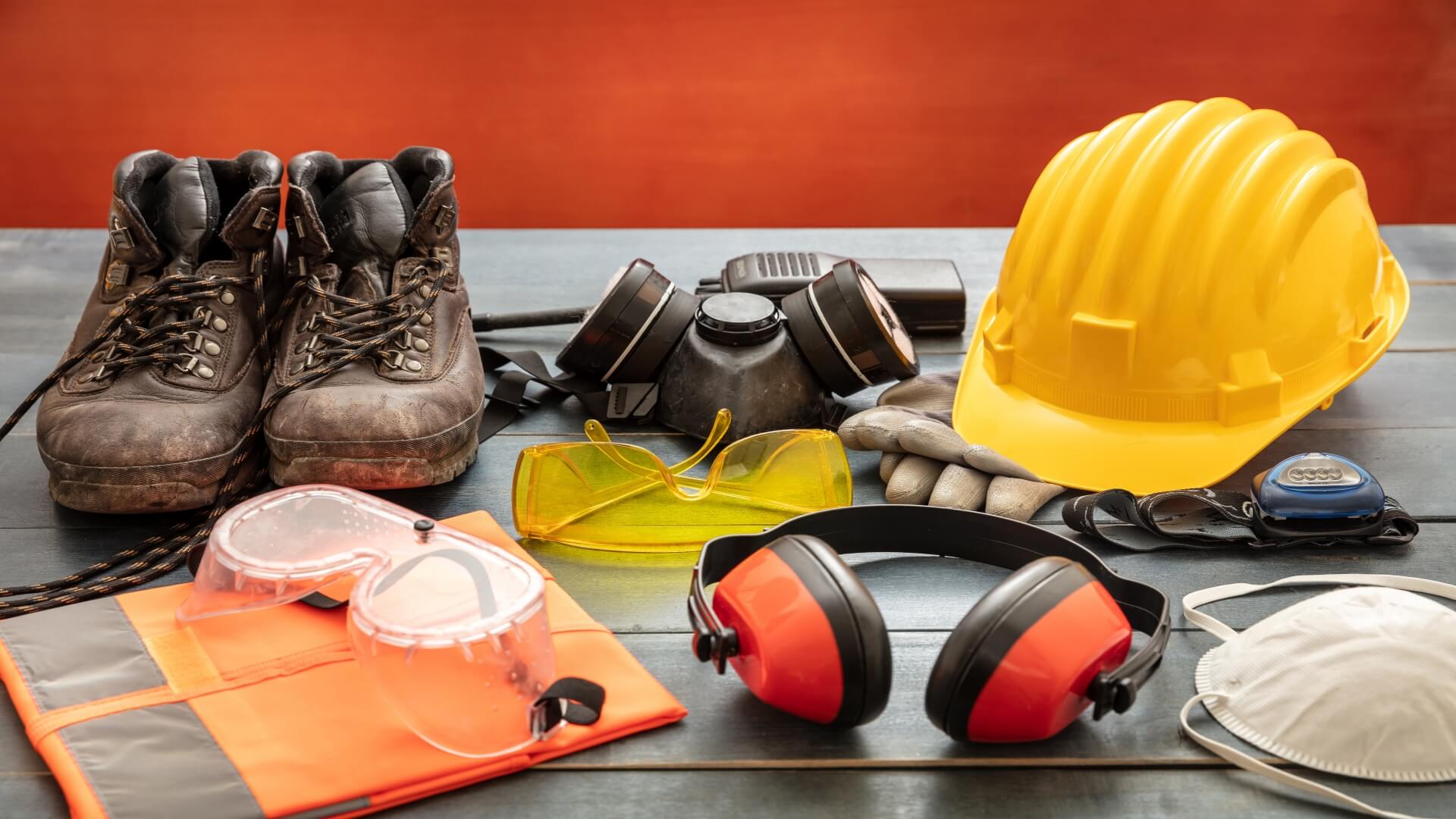

Building & Construction
Why Construction Safety Is Important
Modified: January 23, 2024
Discover why construction safety is crucial in building construction projects. Protect your workers, minimize accidents, and ensure compliance with industry regulations
(Many of the links in this article redirect to a specific reviewed product. Your purchase of these products through affiliate links helps to generate commission for Storables.com, at no extra cost. Learn more)
Introduction
Construction is an industry that plays a vital role in shaping the infrastructure of our society. From buildings and bridges to roads and railways, construction projects shape the physical landscape we live and work in. However, it is crucial to recognize that construction sites can also be inherently dangerous places, posing significant risks to the health and safety of workers.
Construction safety is of utmost importance and should never be disregarded or taken lightly. It encompasses measures, protocols, and practices that are put in place to prevent accidents, injuries, and even fatalities on construction sites. Prioritizing construction safety is not just a moral obligation; it is a legal requirement that must be adhered to by employers, contractors, and workers alike.
Failure to implement proper safety precautions can have severe consequences. Accidents on construction sites can result in not only injuries to workers but also property damage, project delays, financial liabilities, and reputational damage to companies involved. To mitigate these risks and promote a safe working environment, it is essential to understand the importance of construction safety and the steps that can be taken to ensure the well-being of all individuals on site.
In this article, we will delve into the significance of construction safety, the legal requirements, and the benefits associated with prioritizing safety. We will also discuss the common hazards found in construction, the necessary steps to ensure safety, and the roles that employers and employees play in maintaining a safe working environment. Additionally, we will explore the significance of training and education in equipping construction workers with the knowledge and skills needed to work safely. Lastly, we will discuss the importance of promoting a culture of safety within the construction industry.
By the end of this article, you will have a comprehensive understanding of why construction safety is important and the steps that can be taken to ensure a safe working environment in the construction industry.
Key Takeaways:
- Prioritizing construction safety not only protects workers but also leads to increased productivity, improved quality of work, and enhanced company reputation, creating a safer and more successful working environment.
- Promoting a culture of safety in construction involves strong leadership commitment, employee empowerment, clear communication, and continuous improvement, fostering a positive environment for all individuals on construction sites.
Read more: Why Construction Is Important
Importance of Construction Safety
Construction safety is of paramount importance for several reasons. First and foremost, it preserves the well-being and lives of construction workers. Construction sites are filled with potential hazards such as falls from heights, machinery accidents, electrical shocks, and exposure to harmful substances. By implementing proper safety measures, these risks can be mitigated, reducing the chances of accidents and injuries.
Furthermore, prioritizing construction safety leads to increased productivity and efficiency. When workers feel safe and secure, they can focus on their tasks without the constant worry of potential dangers. This enables them to work more efficiently, resulting in improved productivity and the timely completion of projects. On the other hand, accidents and injuries can lead to project delays, increased costs, and diminished productivity as resources are diverted towards addressing safety concerns.
Construction safety also has a positive impact on the overall quality of work. When workers are not rushing due to safety concerns, they have the time and focus to perform their duties with precision and attention to detail. This results in the delivery of high-quality workmanship and reduces the likelihood of errors and rework.
Another critical aspect is the reputation of construction companies. Prioritizing safety sends a strong message to clients, stakeholders, and the public that the company values the well-being of its workers and takes their safety seriously. This builds trust, enhances the company’s reputation, and can lead to repeat business and new opportunities.
Construction safety also plays a significant role in legal compliance. Government regulations and standards are in place to protect workers and ensure safe working conditions. Failing to meet these requirements can result in penalties, fines, legal liabilities, and even the suspension of construction projects. By prioritizing safety and adhering to these regulations, companies can avoid legal troubles and maintain a positive relationship with regulatory bodies.
Furthermore, construction safety goes hand in hand with employee morale and satisfaction. When workers feel that their safety is a top priority, it enhances their overall job satisfaction and instills a sense of loyalty and commitment to their employers. This positive work environment fosters teamwork, reduces turnover rates, and attracts skilled workers who value safety as a fundamental aspect of their work.
Overall, the importance of construction safety cannot be overstated. It safeguards the well-being of workers, increases productivity and efficiency, improves the quality of work, enhances reputations, ensures legal compliance, and boosts employee morale and satisfaction. By prioritizing construction safety, we create a safer and healthier work environment for everyone involved in the construction industry.
Legal Requirements for Construction Safety
The construction industry is subject to various legal requirements and regulations to ensure the safety and well-being of workers. These regulations are in place to prevent accidents, minimize risks, and protect individuals involved in construction projects. It is essential for employers and contractors to understand and comply with these legal requirements to maintain a safe working environment.
One of the fundamental legal requirements for construction safety is the Occupational Safety and Health Act (OSHA), which is enforced by the Occupational Safety and Health Administration. OSHA sets forth standards and regulations that employers must follow to prevent workplace injuries and illnesses. These standards cover a wide range of areas, including hazard communication, fall protection, electrical safety, personal protective equipment, and more.
In addition to federal regulations, there may also be specific state or local regulations that govern construction safety. It is important for employers to be aware of and comply with these additional requirements to ensure full legal compliance.
Employers are responsible for providing a safe working environment and must adhere to certain obligations. They are required to conduct regular inspections of the worksite to identify potential hazards and address them promptly. Employers must also provide appropriate safety training and education to workers, ensuring they have the knowledge and skills to perform their jobs safely.
Employers are also obligated to provide and maintain necessary safety equipment and personal protective equipment (PPE). This includes items such as hard hats, safety goggles, gloves, safety harnesses, and respiratory protective equipment, among others. Employers must ensure that workers are trained in the correct usage of these safety devices and that they are readily available and in good working condition.
Furthermore, employers must establish effective communication channels regarding safety. This includes implementing clear procedures for reporting hazards, incidents, and near-misses and promptly addressing any concerns raised by workers. Regular safety meetings and briefings should be conducted to discuss potential risks, update safety protocols, and reinforce the importance of safety on construction sites.
Failure to comply with these legal requirements can result in severe consequences. Employers may face penalties, fines, or even legal action in the event of non-compliance. It is crucial for employers to understand the legal obligations related to construction safety and take proactive steps to ensure compliance.
It is important to note that legal requirements can vary depending on the jurisdiction and the nature of the construction project. Employers and contractors should consult with legal professionals or regulatory bodies to ensure full compliance with applicable laws and regulations.
By adhering to the legal requirements for construction safety, employers demonstrate their commitment to the well-being of workers and help create a safer working environment in the construction industry.
Benefits of Prioritizing Construction Safety
Prioritizing construction safety not only protects the well-being of workers but also brings several benefits to construction companies, projects, and stakeholders. By investing in safety measures, companies can reap the following advantages:
- Reduced Accidents and Injuries: The primary benefit of prioritizing construction safety is a significant reduction in accidents and injuries. Implementing proper safety protocols and providing training and education to workers minimizes the risks associated with construction hazards. This leads to a safer work environment, fewer incidents, and a decrease in worker injuries, ultimately saving on medical costs and potential legal liabilities.
- Increased Productivity and Efficiency: A safe work environment allows workers to focus on their tasks without constant worry about potential hazards. When workers feel secure, they can work more efficiently, resulting in increased productivity. This leads to the timely completion of projects, improved project schedules, and associated cost savings.
- Improved Morale and Job Satisfaction: Prioritizing safety shows workers that their well-being is valued. This positive work environment improves morale, boosts employee satisfaction, and fosters a sense of loyalty and commitment to the company. Increased job satisfaction reduces turnover rates, leading to a more stable workforce and enhanced project continuity.
- Enhanced Company Reputation: Companies that prioritize construction safety gain a positive reputation within the industry. Clients, stakeholders, and the public view them as responsible and reliable partners. This reputation can result in greater trust, repeat business, new opportunities, and a competitive advantage over companies with a poor safety record.
- Cost Savings: While initially, investing in safety measures may seem costly, it ultimately leads to cost savings in the long run. By preventing accidents and injuries, companies avoid medical expenses, workers’ compensation claims, and potential legal fines. Additionally, a safe working environment reduces the need for rework, repairs, and project delays due to safety-related incidents.
- Higher Quality of Work: A safe work environment allows workers to focus on their tasks and perform them with precision and attention to detail. This leads to a higher quality of workmanship, reducing the likelihood of errors, rework, and costly project setbacks. Prioritizing safety ensures that projects are completed to the highest standards and meet or exceed client expectations.
- Improved Employee Engagement: Safety programs provide opportunities for workers to engage in their own safety and the safety of their colleagues. Involving workers in safety initiatives and encouraging them to provide input fosters a culture of engagement and participation. Workers become more invested in their own well-being and actively contribute to creating a safe and healthy work environment.
Prioritizing construction safety is a win-win situation for both workers and construction companies. It not only safeguards the well-being of individuals on construction sites but also leads to increased productivity, improved morale, enhanced reputation, cost savings, higher quality of work, and improved employee engagement. By investing in safety, construction companies create a safer and more successful working environment for everyone involved.
Common Hazards in Construction
The construction industry is known for its unique set of hazards and risks that can pose serious threats to the health and safety of workers. These hazards must be identified and addressed to prevent accidents and injuries on construction sites. Here are some of the most common hazards in construction:
- Falls: Falls from heights are a leading cause of injury and fatalities in construction. Working on scaffolds, rooftops, ladders, or elevated platforms without proper fall protection can result in severe injuries or even death. It is crucial to implement fall prevention measures such as guardrails, safety nets, and personal fall arrest systems.
- Electrical Hazards: Construction sites often have exposed wiring, unfinished electrical systems, and the use of temporary power sources. These factors can lead to electrical shocks, burns, and electrocution. It is essential to follow electrical safety guidelines, use proper personal protective equipment, and have qualified personnel handle electrical installations or repairs.
- Struck-By Accidents: Workers on construction sites are at risk of being struck by moving objects such as falling debris, equipment, or vehicles. It is crucial to establish proper communication and signaling protocols, secure loose materials, use barriers to separate workers from moving equipment, and ensure workers wear high-visibility clothing.
- Collapse of Trenches or Excavations: Working in trenches or excavations can be hazardous due to the risk of collapse. Proper protective systems, such as shoring, shielding, or benching, should be used to prevent cave-ins. Regular inspections of trench supports and proper soil analysis are also essential to maintain the stability of excavations.
- Caught-In or Between Hazards: Construction workers can be caught in or between objects or equipment. Examples include being caught in machinery, between vehicles, or being trapped in collapsing materials. Proper machine guarding, lockout/tagout procedures, and safe work practices can help prevent these hazards.
- Hazardous Substances: Construction sites often involve the use of hazardous substances such as asbestos, lead, silica, and various chemicals. Inhalation, skin contact, or ingestion of these substances can lead to long-term health issues or acute illnesses. Implementing proper hazard communication, providing appropriate personal protective equipment, and following safe handling and disposal procedures are critical in preventing exposure.
- Noise and Vibrations: Construction sites can generate high levels of noise and vibrations from equipment, machinery, and various construction activities. Prolonged exposure to excessive noise can lead to hearing loss, while prolonged exposure to vibrations can cause hand-arm or whole-body vibration syndrome. Adequate hearing protection and regular breaks from vibrating equipment are essential in mitigating these hazards.
- Slips, Trips, and Falls: Construction sites are often dynamic, with uneven surfaces, cluttered walkways, and potential slip and trip hazards such as loose materials or equipment. Proper housekeeping, regular inspections, use of proper footwear, and clear signage can help prevent slip, trip, and fall incidents.
These are just a few examples of the common hazards in construction. It is essential for employers, contractors, and workers to recognize and understand these risks and take proactive measures to prevent accidents and injuries. By identifying and addressing these hazards, construction sites can become safer environments for everyone involved.
Steps to Ensure Construction Safety
Ensuring construction safety requires a comprehensive approach that involves proper planning, implementation of safety protocols, and ongoing monitoring of construction sites. Here are some essential steps to ensure construction safety:
- Create a Safety Plan: Develop a detailed safety plan that outlines the potential hazards, safety procedures, and emergency protocols specific to each construction project. The safety plan should be communicated to all workers and regularly reviewed and updated as necessary.
- Conduct Risk Assessments: Identify potential hazards on the construction site through comprehensive risk assessments. This involves analyzing the work processes, equipment usage, materials, and environmental factors to determine the level of risk and implement appropriate controls.
- Provide Proper Training and Education: Ensure that all workers receive proper training and education in construction safety. This includes training on specific hazards, proper use of tools and equipment, emergency procedures, and the importance of following safety protocols. Training should be continuous, with regular refresher courses and updates as needed.
- Implement Safety Protocols: Establish and enforce safety protocols that align with industry standards and legal requirements. These protocols should cover areas such as personal protective equipment (PPE) usage, equipment inspection and maintenance, safe work practices, and hazard communication. Encourage workers to actively participate in safety initiatives and provide feedback for continuous improvement.
- Ensure Proper Equipment and Tools: Provide workers with properly maintained tools and equipment that meet safety standards. Regularly inspect and maintain equipment to identify any potential hazards or malfunctions. Additionally, encourage workers to report any faulty equipment promptly.
- Manage and Control Construction Site Access: Control access to the construction site to ensure that only authorized individuals with the necessary training and qualifications are allowed entry. Implement measures such as identification badges, sign-in procedures, and secure fencing to prevent unauthorized access.
- Implement Fall Protection Measures: Falls from heights are a significant hazard in construction. Implement proper fall protection measures such as guardrails, safety nets, and personal fall arrest systems. Conduct regular inspections of fall protection equipment and ensure workers receive training on their proper use.
- Monitor and Manage Subcontractors: Construction projects often involve multiple subcontractors. It is crucial to ensure that all subcontractors adhere to the same safety standards and protocols established for the project. Regularly communicate with subcontractors to address any safety concerns and reinforce the importance of safety on the construction site.
- Establish Emergency Response Procedures: Plan and communicate emergency response procedures to all workers. This includes procedures for fire incidents, medical emergencies, natural disasters, and evacuation. Conduct regular drills to ensure workers are familiar with the procedures and know how to respond in case of an emergency.
- Regular Inspections and Audits: Conduct regular inspections and audits of the construction site to proactively identify potential hazards and address any safety issues. These inspections should be performed by trained individuals who are knowledgeable about construction safety and compliance with regulations.
Implementing these steps will help promote a culture of safety on construction sites and minimize the risks that workers face. Regular communication, training, supervision, and ongoing monitoring are essential to maintaining a safe working environment throughout the duration of the construction project.
Always wear the appropriate personal protective equipment (PPE) for the task at hand. This includes hard hats, gloves, safety glasses, and steel-toed boots. Your PPE can greatly reduce the risk of injury on a construction site.
Training and Education for Construction Workers
Training and education are crucial components of ensuring construction safety. They provide construction workers with the knowledge, skills, and awareness necessary to identify hazards, follow safety protocols, and effectively respond to potential risks on construction sites. Here are important aspects of training and education for construction workers:
- Orientation and Induction: Upon joining a construction project, workers should receive a comprehensive orientation that covers the project’s safety protocols, emergency procedures, and the specific hazards they may encounter. This helps familiarize workers with the site-specific safety rules and expectations right from the start.
- Hazard Awareness Training: Workers must receive training on identifying and assessing potential hazards specific to their tasks. This includes understanding hazards such as falls, electrical dangers, exposure to hazardous substances, and more. Hazard awareness training equips workers with the ability to identify risks and take appropriate preventive measures.
- Proper Use of Tools and Equipment: It is vital to train workers on the safe and proper use of tools, machinery, and equipment commonly used in construction. This includes training on operating procedures, maintenance requirements, and the use of personal protective equipment (PPE) when operating specific equipment.
- Work at Heights Training: Given the prevalence of work at heights in construction, workers should receive specialized training on safe practices for working on scaffolds, ladders, roofs, and other elevated surfaces. This training should cover fall prevention, proper use of fall protection systems, and the importance of inspecting equipment before use.
- Electrical Safety Training: Construction workers should receive training on electrical hazards, safe work practices, and the proper use of electrical equipment. This training aims to prevent electrical accidents, such as electric shocks, burns, and fires. Workers should also receive specific training on lockout/tagout procedures to safely work on electrical systems.
- Hazardous Substance Handling and Awareness: Construction workers may come into contact with hazardous substances such as chemicals, asbestos, lead, and silica. Training should educate workers on the potential health risks associated with these substances and provide guidance on safe handling, proper use of personal protective equipment, and protocols for cleanup and disposal.
- First Aid and Emergency Response: Workers should receive training in basic first aid, CPR, and emergency response procedures. This training prepares them to handle medical emergencies, provide initial treatment, and facilitate a quick and effective response to accidents or critical incidents on the construction site.
- Communication and Teamwork: Training should emphasize the importance of effective communication and teamwork on construction sites. This includes the ability to communicate hazards, report incidents, and work collaboratively to ensure a safe work environment for all workers.
- Mental Health and Well-being: Recognizing the importance of mental health in the construction industry, workers should be provided with education and resources on stress management, coping mechanisms, and seeking support when needed. Mental health training helps promote a positive work environment and reduces the risk of accidents caused by distractions or emotional distress.
- Continuous Training and Refreshers: It is essential to provide ongoing training and refresher courses to ensure that workers remain up-to-date with the latest safety protocols, regulations, and best practices. Communication channels like toolbox talks and safety meetings can serve as valuable opportunities to reinforce training and address any questions or concerns.
Investing in training and education for construction workers not only enhances safety but also empowers workers to take an active role in ensuring their personal well-being and the well-being of their colleagues. By equipping workers with the necessary knowledge and skills, construction companies can create a culture of safety and promote a safer working environment for everyone involved.
Role of Employers in Construction Safety
Employers play a critical role in ensuring construction safety. They are responsible for creating and maintaining a safe work environment for their employees. Here are the key responsibilities and actions that employers should undertake to prioritize construction safety:
- Establish a Safety Culture: Employers should cultivate a culture of safety within the organization. This involves setting clear expectations that safety is a top priority, and all employees are responsible for following safety protocols. Promoting safety as an integral part of the company’s values and mission creates a positive environment that encourages proactive safety behaviors.
- Develop and Implement Safety Policies and Procedures: Employers must establish comprehensive safety policies and procedures specific to their construction projects. These policies should be communicated to all employees and contractors, outlining the expectations for safe work practices, proper use of equipment, and adherence to safety regulations and standards.
- Provide Adequate Resources: Employers should allocate sufficient resources to support and maintain construction safety. This includes providing necessary safety equipment, tools, and personal protective equipment (PPE) to employees. Employers should also ensure that safety equipment and machinery are properly maintained, inspected, and updated as necessary.
- Conduct Risk Assessments and Regular Inspections: Employers should conduct regular risk assessments of worksites to identify potential hazards and determine appropriate control measures. Regular inspections should also be conducted to monitor compliance with safety protocols and identify any emerging issues or hazards that require immediate attention.
- Provide Proper Training and Education: Employers are responsible for providing comprehensive safety training, education, and ongoing professional development to their employees. This includes orientation and induction programs for new employees, training on specific hazards, safe work practices, emergency response procedures, and the proper use of equipment and protective gear.
- Ensure Open Communication: Employers should foster open and transparent communication channels with employees regarding safety matters. This includes establishing mechanisms for reporting hazards, incidents, and near-misses, as well as providing regular updates on safety initiatives and addressing any safety concerns or suggestions raised by employees.
- Enforce Compliance with Safety Regulations: Employers must ensure that all employees and contractors comply with safety regulations and standards. This includes monitoring and enforcing the proper use of PPE, adherence to safety procedures, and following safe work practices. Non-compliance should be addressed promptly and corrective actions taken to rectify any safety violations.
- Promote Worker Involvement and Empowerment: Employers should actively involve employees in safety-related activities and decision-making processes. This includes soliciting input and feedback, encouraging suggestions for improvement, and empowering employees to participate in safety committees or task forces. By involving workers, employers gain valuable insights and increase employee engagement in safety initiatives.
- Regularly Evaluate and Improve Safety Performance: Employers should regularly evaluate the effectiveness of their safety programs and initiatives. This can be done through analyzing incident reports, conducting safety audits, reviewing near-miss reports, and seeking input from employees. Continuous improvement is essential to identify areas of weakness and implement proactive measures to enhance safety performance.
- Lead by Example: Employers should lead by example and demonstrate their commitment to construction safety. They should adhere to safety protocols themselves, actively participate in safety initiatives, and prioritize safety in all decision-making processes. When employers prioritize safety, it sets the tone for the entire organization and reinforces the importance of safety to all employees.
Employers have a significant responsibility in creating a safe work environment for construction workers. By fulfilling their role, employers not only protect the well-being of their employees but also contribute to improved productivity, higher morale, and a positive safety culture within the construction industry.
Role of Employees in Construction Safety
Employees play a crucial role in construction safety as they are directly involved in executing tasks and following safety protocols on construction sites. Their active participation and commitment to safety are essential for maintaining a safe work environment. Here are the key responsibilities and actions that employees should undertake to prioritize construction safety:
- Follow Safety Protocols: Employees must adhere to all safety protocols and procedures established by their employer. This includes using personal protective equipment (PPE) as required, following proper work practices, and reporting any safety concerns or hazards they identify on the construction site.
- Participate in Safety Training: Employees should actively participate in safety training programs provided by their employer. This includes attending orientation sessions, hazard awareness training, and any specialized training relevant to their work tasks. By gaining knowledge and understanding of potential hazards, employees can effectively mitigate risks and respond to safety incidents.
- Utilize Personal Protective Equipment (PPE): Employees should use the appropriate PPE for their specific tasks and ensure that it is in good condition. This may include safety helmets, goggles, gloves, protective footwear, ear protection, and respiratory protective equipment, among others. Proper use and maintenance of PPE are vital to minimize the risk of injuries.
- Communicate Safety Concerns: Employees should actively communicate any safety concerns or hazards they encounter to their supervisors, safety committees, or designated personnel. This includes reporting near-miss incidents, potential dangers, faulty equipment, or any other safety-related issues that may compromise the well-being of themselves or their colleagues.
- Participate in Safety Inspections and Audits: Employees should participate in safety inspections and audits conducted on the construction site. This may involve identifying hazards, providing input on potential control measures, and rectifying any issues within their capability. Collaboration with safety personnel and supervisors promotes a collective effort to maintain a safe working environment.
- Practice Good Housekeeping: Good housekeeping practices, such as keeping work areas clean, organized, and free from debris, are crucial for preventing accidents and injuries. Employees should proactively maintain tidy workspaces, promptly clean up spills, and properly store tools and equipment to minimize trip hazards and ensure a safe working environment for all.
- Properly Use and Care for Tools and Equipment: Employees should use tools and equipment properly according to manufacturer instructions and safety guidelines. Regular inspections and maintenance of tools and equipment are essential to ensure they are in safe working condition. Any faulty or damaged equipment should be reported immediately to supervisors for repair or replacement.
- Report Incidents and Near-Misses: It is important for employees to promptly report all incidents, injuries, and near-miss events to their supervisors or designated safety personnel. Reporting incidents allows for appropriate investigation, identification of root causes, and implementation of corrective measures to prevent recurrence. Near-miss reports are vital in identifying potential hazards or control weaknesses before they result in more severe incidents.
- Support and Promote a Culture of Safety: Employees should actively support and promote a culture of safety within the workplace. This includes encouraging fellow workers to follow safety protocols, recognizing and rewarding safe behaviors, and actively participating in safety initiatives and committees. Employee engagement and buy-in are instrumental in creating a positive safety culture.
- Continuously Learn and Improve: Employees should continuously seek opportunities to learn and improve their safety knowledge and skills. This can include attending additional safety training, staying updated on industry best practices, and actively participating in toolbox talks and safety meetings. By continuously learning and improving, employees contribute to creating a safer work environment and personal growth.
Employees are integral to maintaining construction safety. By embracing their role and actively participating in safety measures, employees contribute to a safer work environment, reduce the risk of accidents and injuries, and foster a positive safety culture within the construction industry.
Promoting a Culture of Safety in Construction
Promoting a culture of safety in construction is essential to create a work environment where safety is a fundamental value and a collective responsibility. A strong safety culture fosters proactive behaviors, open communication, and a shared commitment to the well-being of all individuals on the construction site. Here are key strategies to promote a culture of safety in construction:
- Leadership Commitment: Strong leadership commitment is crucial for promoting a culture of safety. Leaders must visibly demonstrate their commitment to safety through their words and actions. This includes consistently following safety protocols, allocating resources for safety initiatives, and actively engaging in safety discussions and initiatives.
- Employee Empowerment: Empowering employees to actively participate in safety initiatives and decision-making processes is vital. Encourage open dialogue, provide opportunities for employee input in safety matters, and recognize and reward safe behaviors. By involving employees, they feel a sense of ownership in safety outcomes and are more likely to actively contribute to a safer work environment.
- Clear Communication: Effective communication is essential for promoting a culture of safety. It is important to establish clear channels of communication to share safety-related information, such as safety policies, procedures, and incident reports. Regular safety meetings, toolbox talks, and safety bulletins can serve as platforms for disseminating safety information and fostering open dialogue.
- Training and Education: Providing comprehensive safety training and education is critical for building awareness and understanding of safety hazards and preventive measures. Employees should receive ongoing training to stay up-to-date on safety practices and regulations. This allows them to make informed decisions and take appropriate actions to minimize risks.
- Lead by Example: Leaders and supervisors should lead by example when it comes to safety practices. By consistently following safety protocols and demonstrating safe behaviors, they set the standard for others. When employees see their leaders prioritizing safety, they are more likely to follow suit and make safety a top priority in their own work practices.
- Identify and Address Hazards: Building a strong safety culture involves identifying and addressing hazards promptly. Encourage all employees to be vigilant in identifying potential hazards and provide an effective reporting system to document and address concerns. Prompt action must be taken to mitigate hazards and prevent accidents before they occur.
- Continuous Improvement: Foster a culture of continuous improvement by regularly evaluating safety performance, analyzing incident reports, and seeking input from employees. This enables the identification of areas for improvement and the implementation of proactive measures to enhance safety. Encourage employees to provide suggestions for safety enhancements and recognize innovative ideas.
- Accountability and Consequences: Establishing accountability for safety is crucial. All employees must understand that unsafe behaviors will have consequences and that safety violations will be addressed promptly. This helps reinforce the importance of adhering to safety protocols and ensures that safety is taken seriously throughout the organization.
- Consistent Enforcement: Consistently enforce safety policies and procedures to create a culture of safety. Hold all individuals accountable, regardless of their position in the organization. This helps build trust and sends a clear message that safety is non-negotiable.
- Recognition and Celebrations: Recognize and celebrate safety achievements and milestones to foster a positive safety culture. Acknowledge individuals or teams who demonstrate outstanding safety practices or make valuable contributions to safety initiatives. Celebrations can serve as a reminder of the organization’s commitment to safety and motivate employees to maintain a safe working environment.
Promoting a culture of safety requires a collective effort from all levels of the organization. By implementing these strategies, construction companies can create an environment where safety is ingrained in daily operations, leading to reduced accidents, increased employee engagement, and a safer and healthier work environment for all.
Conclusion
Construction safety is a paramount concern that cannot be overlooked in the construction industry. Prioritizing safety not only protects the well-being of workers but also brings numerous benefits to construction companies, projects, and stakeholders as a whole.
Construction safety is of utmost importance due to the potential hazards that workers face on construction sites. Falls from heights, electrical injuries, struck-by accidents, and exposure to hazardous substances are just a few examples of the risks that must be mitigated through proper safety measures and protocols.
Complying with legal requirements for construction safety is not only a moral obligation but also a legal responsibility. Employers must adhere to the Occupational Safety and Health Act (OSHA) and other relevant regulations to ensure a safe working environment for their employees. Failure to meet these requirements can result in penalties, fines, and other legal consequences.
Prioritizing construction safety brings numerous benefits. It reduces accidents and injuries, leading to increased productivity, improved morale, and better quality of work. It enhances company reputation, saves costs associated with accidents and legal liabilities, and creates a positive work environment that attracts and retains skilled workers.
To ensure construction safety, various steps must be taken. Creating a safety plan, conducting risk assessments, providing proper training and equipping employees with the necessary knowledge and skills, and enforcing safety protocols are crucial. Regular inspections, monitoring subcontractors, and establishing emergency response procedures are also essential aspects of construction safety.
The role of employers and employees in construction safety is equally important. Employers must take the lead in establishing a safety culture, providing necessary resources, and ensuring compliance with safety regulations. Employees must actively follow safety protocols, communicate hazards, and participate in training and inspections to maintain a safe working environment.
Ultimately, promoting a culture of safety is essential in the construction industry. Through leadership commitment, employee empowerment, clear communication, training, and continuous improvement, a positive safety culture can be fostered. When safety becomes ingrained in the organization’s values and embraced by all employees, a safer and healthier working environment is achieved.
In conclusion, construction safety cannot be compromised. By prioritizing safety, construction companies safeguard their workers, enhance productivity and efficiency, and contribute to a positive reputation within the industry. The collective effort of employers, employees, and stakeholders is crucial in creating a culture of safety that ensures the well-being of everyone involved in construction projects.
Frequently Asked Questions about Why Construction Safety Is Important
Was this page helpful?
At Storables.com, we guarantee accurate and reliable information. Our content, validated by Expert Board Contributors, is crafted following stringent Editorial Policies. We're committed to providing you with well-researched, expert-backed insights for all your informational needs.

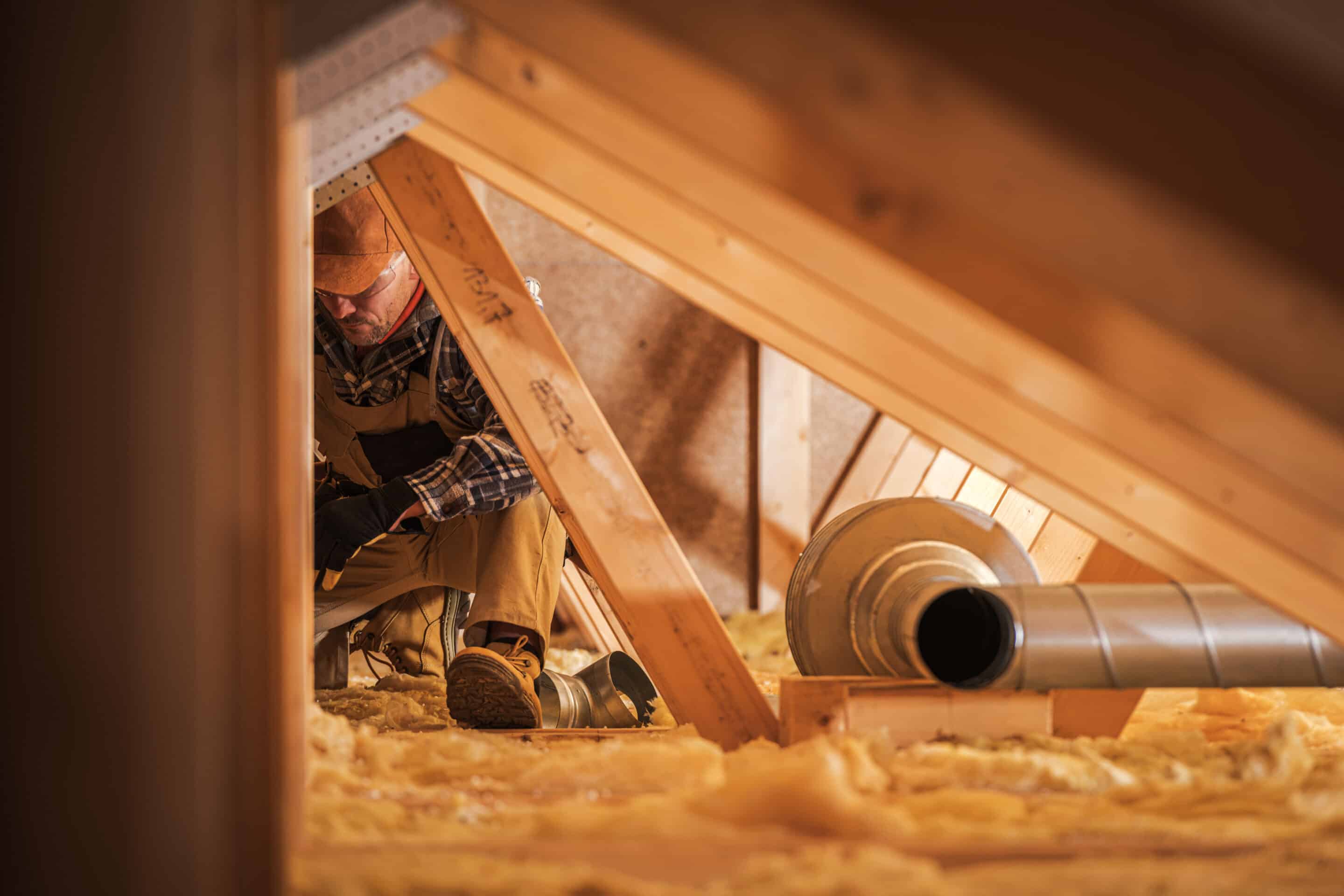

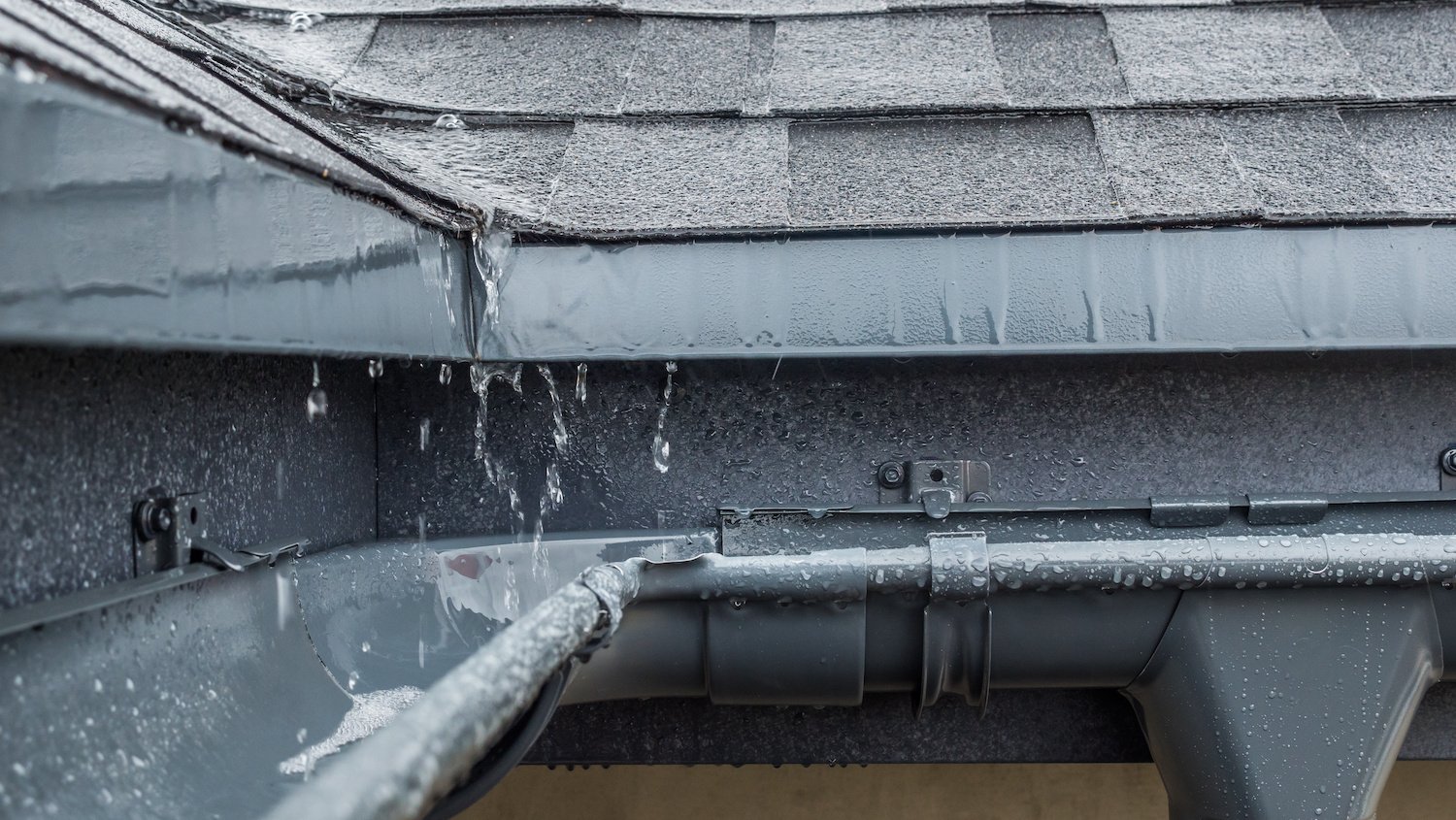

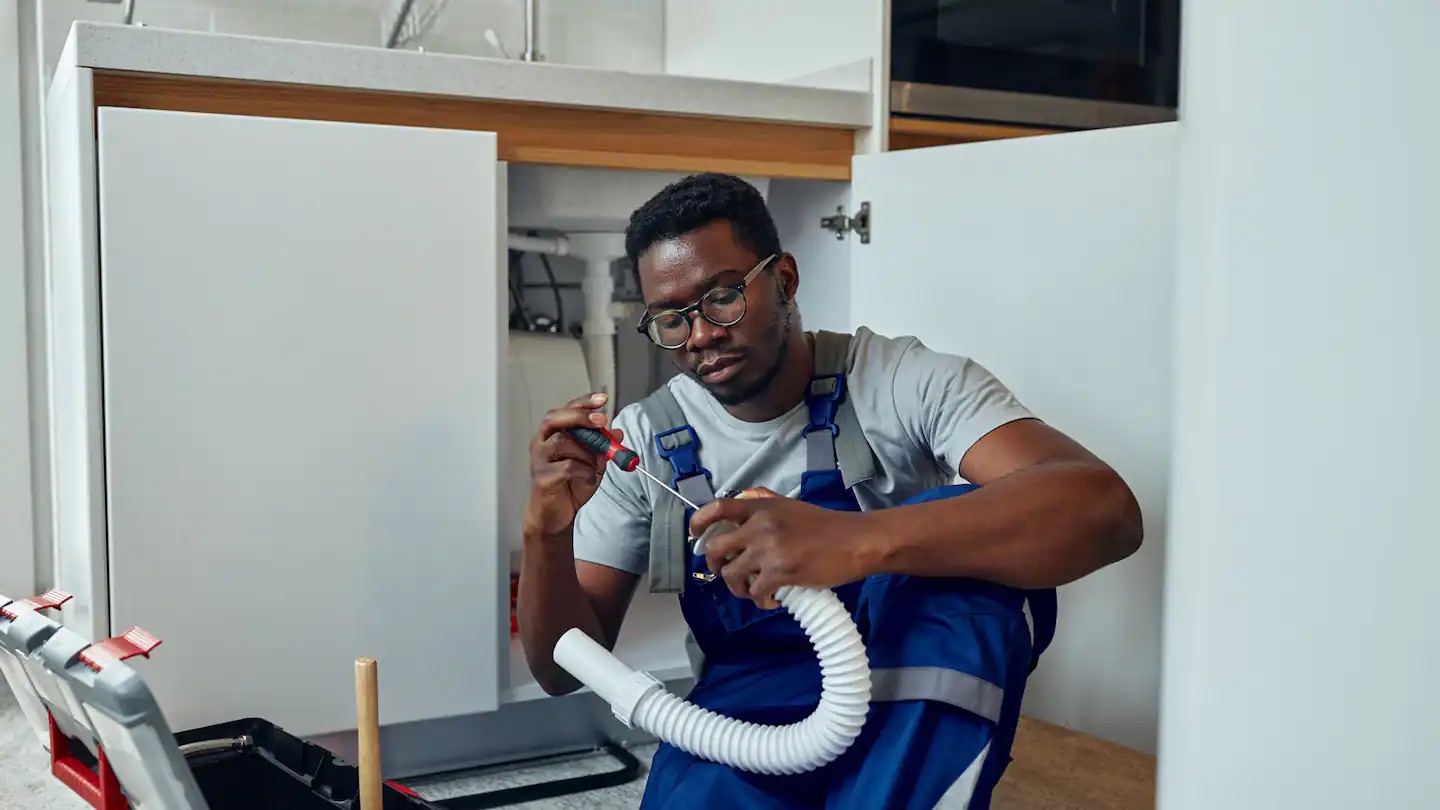






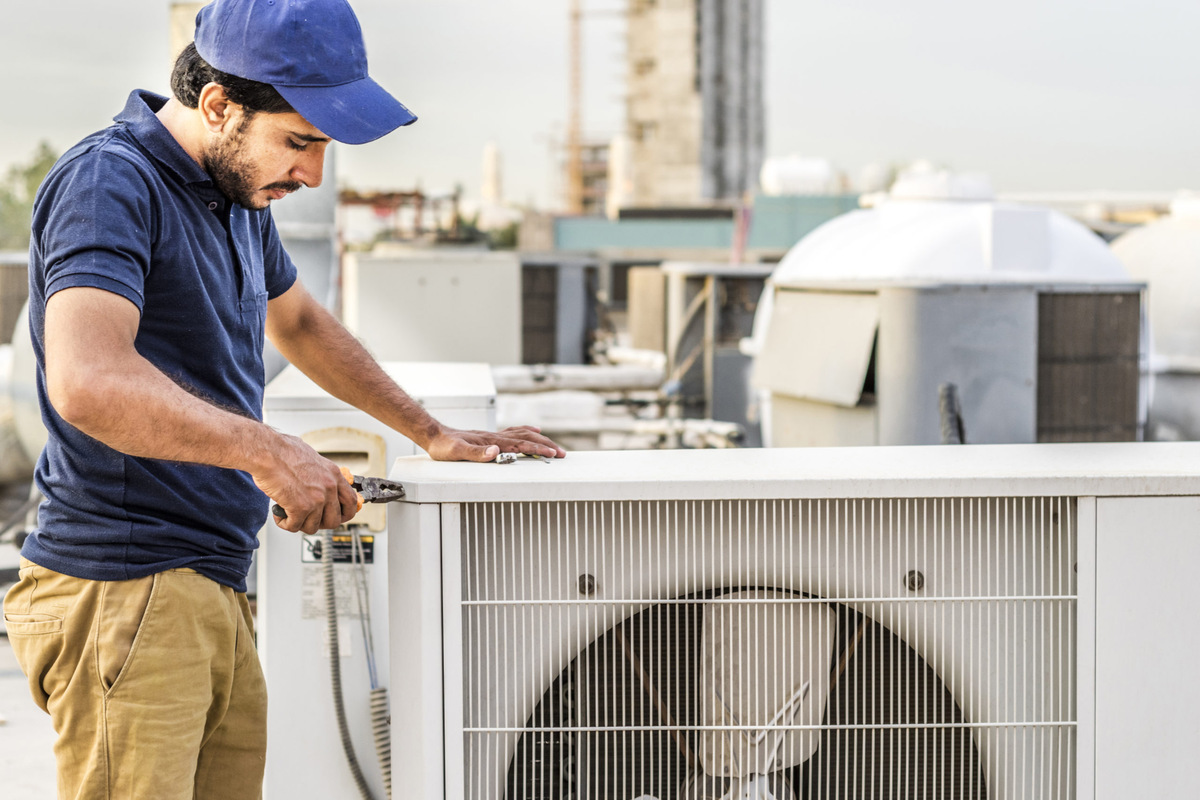

0 thoughts on “Why Construction Safety Is Important”